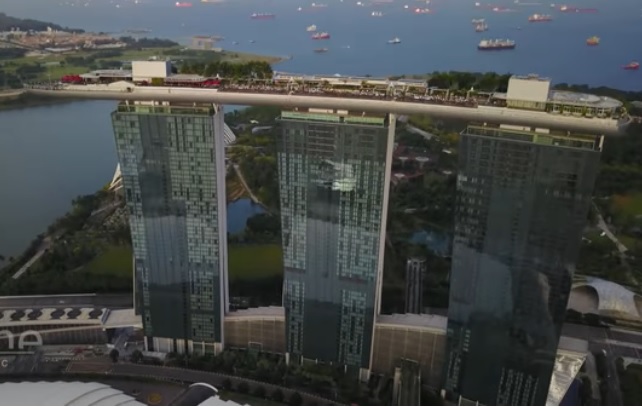National Development Minister Lawrence Wong outlined how Singapore plans to fit future generations by “going upward, downward and seaward.”
This was after Emeritus Senior Minister Goh Chok Tong said on 25 April that land-scarce Singapore must have bold and visionary leadership to overcome more complex urban development challenges in the years ahead.
Upward
By going upward, Wong highlighted how Singaporeans have become accustomed to high-rise living, however, there are still places that have not been maximized to their fullest potential, Wong said.
The places he cited include the Paya Lebar area, where some 800ha of land – about the size of Bishan – will be less congested when the airbase is relocated in 2030. Likewise, the move will take into account height restrictions and allow for efficient building of the surrounding industrial areas.
Other examples he cited of going upward were vertical farming and having more solar panels on rooftops. By next year, half of the roughly one million Housing Board blocks will have solar panels, he said.
Downward
The second strategy is to use Singapore’s underground space. For instance, the Government is now studying if it is possible to co-locate utility lines in MRT tunnels, or have underground water storage in addition to deep tunnel sewerage or district cooling systems.
Plans are underway to push substations at the former Pasir Panjang Power District underground and free up land for new commercial buildings, and to study potential underground cavern areas in Jurong in order to house utility, industrial and storage facilities.
Seaward
The third way Singapore can expand its land is by heading to the sea, said Mr Wong, suggesting floating platforms which could hold offshore solar panels, deep-sea fish farming, as well as reclamation.
Reclamation, he added, is important for another reason: “When we imagine Singapore in 2060, a scenario we must surely contemplate is one where we are inundated by rising sea levels. It’s a very real existential threat.”
By raising the reclamation levels by an additional 1m, “we are building up our coastline to a higher level and strengthening our defences against rising sea levels”, he said.
But such endeavours are costly and require a lot of sand, so other strategies are required, such as the use of polders – pieces of reclaimed low-lying land protected by dykes – and protective infrastructure such as seawalls and pumping stations.
Technology is key to sustaining these strategies, Mr Wong underscored.
“This is why we are investing in research and development in a wide range of urban solutions, to tackle existential threats like global warming and food security, to create new versions of urban living that will be more fulfilling and sustainable than before,” he said.
According to Wong, space will always be a concern in Singapore. But he urged Singaporeans to think of cities as living organisms. “Competition is intense and it is the survival of the fittest. We either adapt or grow, or we stagnate and perish.”
/TISG

